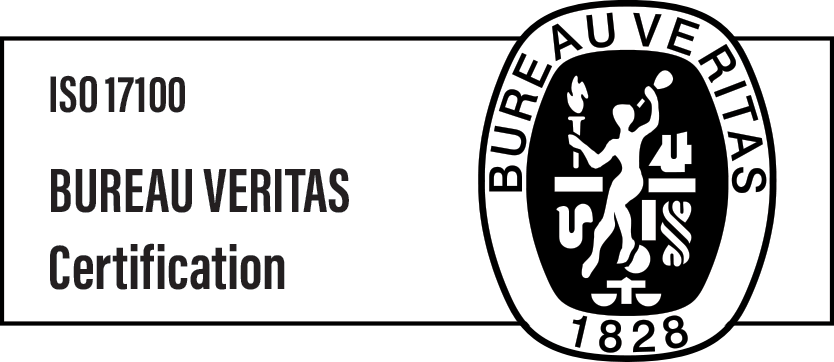Myths about translation

Our clients frequently ask us about various aspects of translation work. Over the years, many misunderstandings have accumulated around this service. Some people are even predicting the inevitable demise of language service providers (LSPs). After all, there’s Google Translate, and that’s all you need, isn’t it? But are things really that simple? In this article, we’re going to deal with the most common myths about translation services. Let’s jump right to it!
Of course, the list of myths about translation is probably much longer than this, but we’ve decided to deal with the most common ones: myths that we’ve come across regularly over the years we’ve been working. So, what’s on our list?
Anyone who speaks the language can be a translator
That’s like saying that anyone who has children can be a teacher. No, they can’t! In order to become a professional translator, you need years of experience and practice. Although it’s true that, at least in theory, you don’t need higher education. Aploq is ISO 17100 certified, and according to the ISO standards regarding translator qualifications, a recognized graduate qualification is not necessary, as long as you have at least five years of full-time professional experience in translating.
This doesn’t change the fact, however, that this profession is very demanding, and saying that anyone who speaks a given language can be a translator is to deny the many skills required for this noble occupation. Typically, it takes at least four to five years to become a professional translator.
In order to be a successful translator, you need to:
- Master both languages (source and target), along with their vocabulary and grammar
- Have good editing skills
- Be precise
- Understand both the culture and the rules governing both languages. In many instances, word-for-word translation is simply insufficient: the text has to be clear and sound natural to a foreign reader.
People also frequently claim that a native speaker can do the job better than a professional translator. That’s also untrue. Native speakers rarely have the necessary education and training. That’s why, if you need to order translation, and you want to be sure that it’s of high quality, you should call on the services of a professional translation agency.
Translation agency = a team of linguists
Today, translation work involves a variety of different IT and DTP tools, and translators often use CAT (computer-aided translation) and MT (machine translation) tools to boost their performance. Moreover, in many, especially larger, agencies, the team comprises not just linguists, translators and interpreters, but also a multitude of specialists in other fields. For example, an agency specialising in medical translations may employ healthcare professionals. So today, an LSP is often much more than just two or three translators working together in one office.
A good translator can work with all kind of texts
Unfortunately, this is also untrue. Every good translator knows not just the language, but also their areas of expertise. In our articles about IT, medical and technical translations, we emphasised how important it is to have the necessary knowledge and experience. Of course, if you’re a professional translator, you can probably handle many different types of texts. However, translating technical, medical or legal content, for example, usually requires additional education. That’s why the most experienced and successful medical translators frequently have a background in healthcare as well.
Translator = interpreter
Here’s another common misconception. Some people think that if you are a trained translator, you can automatically work as an interpreter, too. Well, no, you can’t. An interpreter needs a whole different set of skills to master their profession. Take a look at the set of interpreting skills required by the Administrative Office of the United States Courts. [1] In addition to being highly proficient in the source and target languages, a US Court interpreter has to:
- Show impartiality.
- Be able to accurately and idiomatically turn the message from the source language into the receptor language without any additions, omissions or other misleading factors that alter the intended meaning of the message from the speaker.
- Be adept at simultaneous interpretation, which is the most frequent form of interpretation used in the courtroom, and in consecutive interpretation and sight translation.
- Be able to communicate orally, including appropriate delivery and poise.
- Demonstrate high professional standards for courtroom demeanor and professional conduct.
Interpreters need to have correct pronunciation, reflex, resistance to stress and perfect hearing – all skills that are unnecessary when you’re a translator working with written texts only.
Machine translation (MT) apps will soon replace LSPs
Perhaps, at some point in the distant future, this scenario may occur. But it won’t happen any time soon. Why not? Primarily because machine translation apps like Google Translate and IBM Watson are still imperfect and require careful human attention. Yes, various CAT tools and MT apps may facilitate the translation process, but they can’t substitute the role performed by human translators in the process. Translators do, however, frequently use MT apps and CAT tools to help them do their job better and quicker.
If you’re interested in this subject, we advise you to read this blog post about aids in Polish translations.
There’s only one correct translation
People sometimes think that translating is a process where every word from the source language is translated into its equivalent in the target language. If translations looked like that, the results of our work would be totally incomprehensible! Frequently, in the process of translation, the structure of the sentences and wording need to change in order to maintain the text’s flow and accuracy. It’s quite possible that, if you ask three different translators to translate one sentence, they will give you three completely different translations – all of which will be ‘correct’!
The need for translation is decreasing
According to our observations and experience, exactly the opposite is true! Companies and people all over the world are ordering more and more translations! Thanks to the Internet, every company can compete in the global market. But to do so, companies need to translate their websites and marketing materials into various languages to reach foreign customers. Individuals travel to different countries and immigrate, and need to translate their documents. And the list goes on.
This is not just our experience: the global translation market is growing year on year. In 2013, the global language services industry was worth almost 35 billion USD. The predictions for 2021 are around 56 billion USD. Take a look at this chart provided by Statista.com:

The conclusion is obvious: LSPs are not in danger of disappearing! The global market still understands the need to have professionally translated texts provided by experienced agencies, and not just by Google Translate. If you want to grow and communicate with foreign customers professionally and effectively, you should do the same thing. Entrusting your texts and documents to an experienced language partner is your only guarantee of high-quality results.
If you’re looking for a translation agency that can help you with all your texts and translate and localise them into Polish, you’re in the right place! Drop us a line today and tell us what you need. We’ll be happy to help!
[1] https://www.uscourts.gov/services-forms/federal-court-interpreters/interpreter-skills

